It’s Chinese New Year (CNY) a couple of weeks ago, and us Chinese know how to celebrate — eat, feast, and repeat. Of course, there are many regional Chinese New Year traditions throughout China, and being from HK, the HK tradition is what I’m most familiar with. On New Year’s Eve I was invited to a feast with food expert Lee Man, and it just heightened my appreciation for my culture.
Calling it a feast, obviously it was a multi-course dinner with an abundance of food. We are all about good meanings 意頭 when it comes to choosing the dishes or even naming them for CNY. On Instagram I showed a glimpse of what that means with the CNY dinner made by Mama Lam this year. It’s being realized here once again at Golden Paramount in Richmond.
Food
“Togetherness” is one of the main reasons for CNY celebrations so families often take the opportunity to gather together and dine out during CNY. For that, the restaurant was hustling and bustling and it’s just full of energy! It was a late dinner for us (7:45pm start) and the room was still full and more were being seated as our dinner progressed. And here’s our menu, some background about them, and what they symbolize:
Pan Fried Oysters – Oysters are a homonym for “good”, indicating good luck for the upcoming year. Traditionally we eat dried oysters because it means “good business” 好市 but it does have a more distinctive fishy taste to it and not everyone likes it. This was a Chinese Restaurant Award winner.
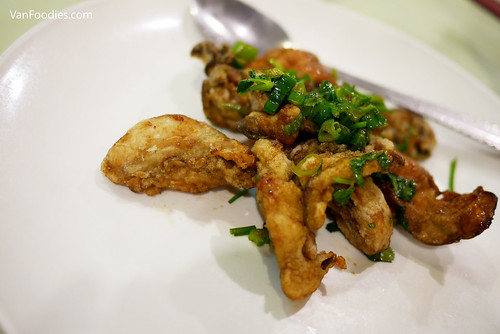
Pepah Tofu – Fried food is usually in a golden colour so it symbolizes gold and fortune. The tofu here is shaped into a Chinese lute, Pipa. Fun fact: I learned to play the Pipa when I was in middle school in HK. Not easy to master but it was fun to play. This was later extended to my involvement with the Vancouver Chinese Music Ensemble.
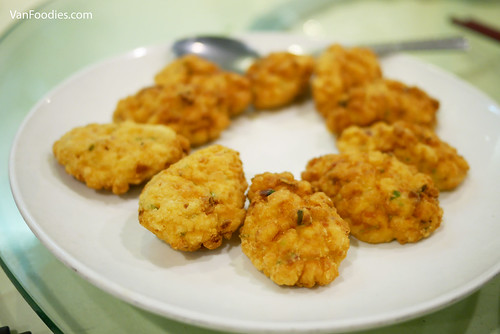
Crab Meat and Fish Maw Soup – At a CNY feast you would want to serve some luxurious items.
In the old days, this would’ve been a shark’s fin soup, but the modern, environmental-conscious folks have since replaced it with different equally luxurious soups, like this one.
Don’t forget a little drizzle of red vinegar to accentuate the flavour.
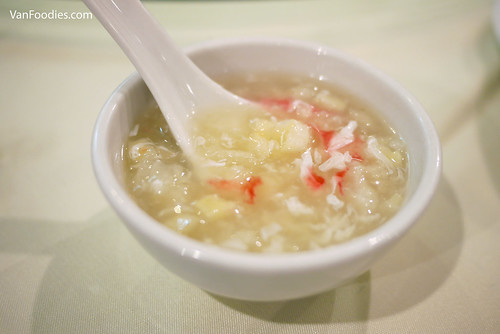
Sweet and Sour Pork – Don’t stereotype, but this is one of my favourite Chinese dish to order. Good quality sweet and sour pork calls for (freshly fried) crispy pork bites thinly laced with the sweet and sour sauce. Some places use vinegar to bring sourness; some use hawthorn berries, which brings a bit of sweetness too. This Chinese Restaurant Award-winning dish checks all these boxes.
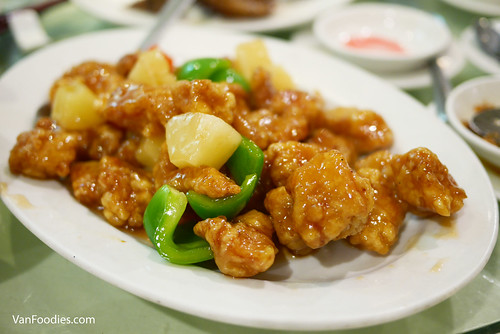
Supreme Broth Lobster – Another luxurious item for the new year. Also, lobster in Chinese is 龍蝦 and 蝦 sounds like “ha”, which resembles laughters and symbolizes happiness.
The supreme broth is made with pork so the best thing to serve with the lobster is some noodles to soak up the sauce.
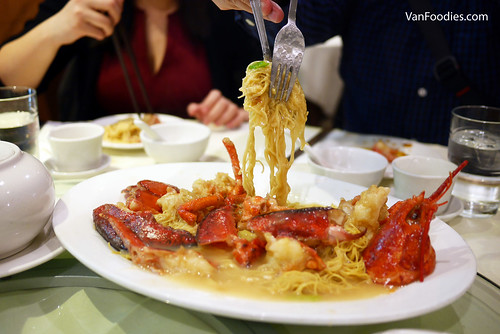
Salt Baked Chicken – You have to serve a whole chicken with its head and tail, as it represents togetherness and good beginnings and good endings for the upcoming year. Golden Paramount sources from local companies, and their chickens are raised locally, Chinese style, so it’s leaner with smaller breast meat.

Steamed Rock Cod – A whole fish represents wealth and luck. It also symbolizes abundance because 魚 sounds like餘, i.e. 有餘 (abundance). When you order a fish, make sure the staff fillets the fish for you. Don’t turn over the fish when eating as that would be bad luck. HK used to be a fishing village, so flipping the fish symbolizes a turned over boat.
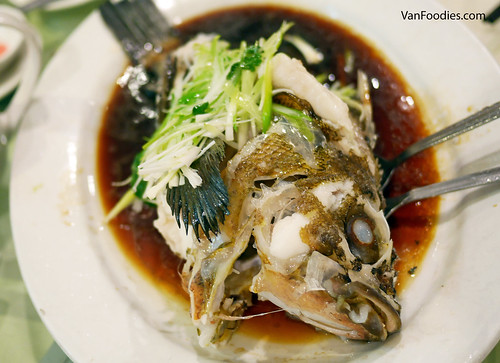
Pan Fried Sticky Rice – Stickiness also represents togetherness. This sticky rice was studded with dried seafood and cured meats. A good pan-fried sticky rice allows you to see and taste each grain (instead of all sticking together) and it wouldn’t be overly greasy (lots of oil apparently could be the trick to prevent the grains from sticking together).
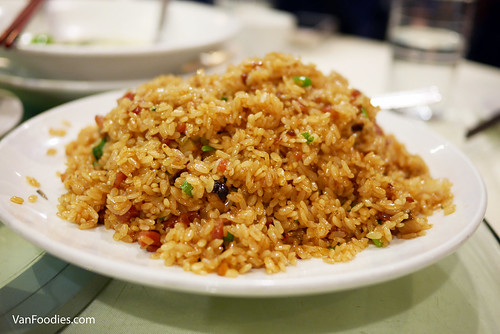
Sweet Red Bean Soup with Sesame Mochi Balls – The mochi balls represents good fortune, also symbolizing something filled with sweetness. Mochi ball 湯圓 also sounds like 團圓, which means togetherness. Mochi balls are also served on the Chinese Valentine’s Day, which is Jan 15th of the lunar calendar (or March 2 of our regular calendar).
More fun fact: Traditionally, married couples hand out red pockets (lai see 利是) to single people, from older to younger ones during Chinese New Year. A modern custom is that customers would hand out red pockets to service staff (e.g. restaurant servers, grocery store clerks) during CNY to show their appreciation for the service. Papa Lam has been working in the service industry, so he can attest to this.
Final Thoughts
Not only were we fed a big Chinese New Year feast, but we were also treated to some food cultural lessons by Lee. Having moved out of Richmond now, it was nice to be back to celebrate our biggest holiday in this city. It’s definitely more festive to celebrate among other Chinese families.
Disclosure: The dinner was provided to me courtesy of Tourism Richmond. However, the views and opinions expressed in this post are purely our own.
Golden Paramount Seafood Restaurant
8071 Park Road, Richmond
604-278-0873


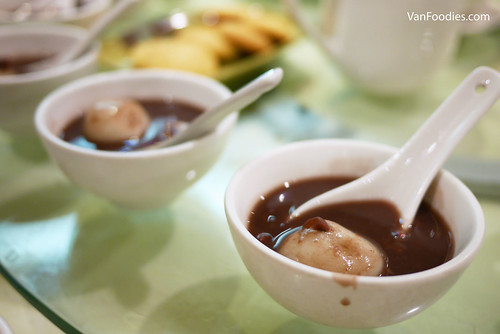





Leave a comment